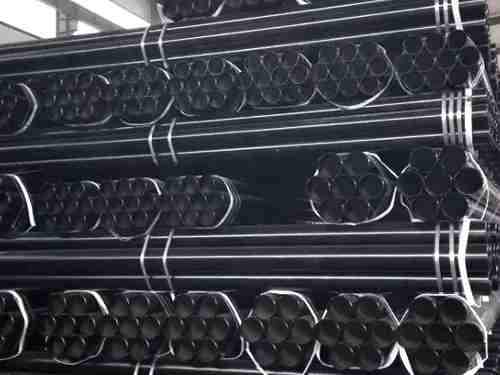Corrosion prevention is essential for ensuring the long-term performance and safety of H-beam steel in structural applications. Below are several effective methods for protecting H-beam surfaces from corrosion.
- Hot-Dip Galvanizing
Hot-dip galvanizing involves immersing the H-beam in molten zinc, forming a dense zinc layer on the surface.
Advantages:
Offers long-lasting protection against corrosion.
Creates a durable and uniform coating resistant to environmental exposure.
Applications: Widely used in outdoor environments or areas prone to humidity and moisture.
- Spraying Anti-Corrosion Paint
Applying anti-corrosion paint forms a protective barrier, preventing oxygen and moisture from reaching the steel surface.
Preparation:
Clean the H-beam thoroughly before painting to ensure proper adhesion.
Advantages:
Customizable colors for aesthetic and functional needs.
Effective for moderate corrosion resistance.
- Anodic Protection
Anodic protection involves installing a sacrificial anode and applying an external current to create cathodic protection, which reduces the rate of steel corrosion.
Advantages:
Ideal for environments with aggressive corrosive agents.
Applications: Often used in industrial structures or marine environments.
- Cold Galvanizing
Cold galvanizing utilizes a chemical galvanizing solution to deposit a zinc layer on the surface of the H-beam.
Advantages:
Simpler process compared to hot-dip galvanizing.
Provides moderate corrosion resistance.
- Sandblasting and Rust Removal
This technique uses high-pressure sandblasting to remove rust and oxidation from the H-beam surface, followed by anti-corrosion paint application.
Advantages:
Ensures a clean and smooth surface for enhanced paint adhesion.
Can be combined with other treatments for comprehensive protection.
- Thermal Spraying
Thermal spraying applies molten metal or alloy onto the H-beam surface, creating a strong, corrosion-resistant coating.
Advantages:
Durable and robust protection.
Suitable for high-exposure environments.
- Plastic Powder Coating
Electrostatic spraying attaches plastic powder to the H-beam surface, forming a protective plastic layer.
Advantages:
Combines corrosion resistance with decorative finishes.
Suitable for indoor and aesthetic applications.
Precautions for H-Beam Corrosion Prevention
- Consideration of the Use Environment
Site Selection: Avoid installation in areas with high corrosion risks, such as coastal or industrial zones.
Environmental Measures:
Enhance ventilation and drainage.
Regularly clean H-beam surfaces to remove corrosive residues.
- Regular Maintenance and Inspection
Inspection: Regularly check the integrity of coatings or protective layers. Repair or reapply coatings promptly when damaged.
Maintenance:
Perform periodic rust removal, cleaning, and repainting.
Protect vulnerable areas, such as welds and joints, with sealants or sacrificial anodes.
- Handling and Storage
Chemical Avoidance: Prevent exposure to corrosive substances, such as acidic cleaners. Use corrosion-resistant fasteners and accessories.
Storage Conditions: Keep H-beams in dry, ventilated areas to minimize exposure to moisture and contaminants.
By implementing a combination of these methods tailored to specific requirements and environmental conditions, H-beam steel can maintain its integrity, safety, and longevity, ensuring reliable structural performance.

 English
English Español
Español











